Key Takeaways
1. Start with Why: The Golden Circle of Inspiration
People don't buy WHAT you do, they buy WHY you do it.
The Golden Circle. At the heart of Simon Sinek's philosophy lies the Golden Circle, consisting of three concentric circles: Why, How, and What. Most organizations and individuals communicate from the outside in, starting with What they do, sometimes addressing How they do it, but rarely articulating Why they do it. However, truly inspiring leaders and organizations reverse this order, starting with Why.
- Why: The purpose, cause, or belief that drives you
- How: The specific actions taken to realize the Why
- What: The tangible results of those actions
Inspiring examples. Apple doesn't just sell computers; they challenge the status quo and empower individuals. Martin Luther King Jr. didn't just have a plan; he had a dream. These leaders inspire because they communicate their purpose first, attracting those who share their beliefs.
2. Leaders Eat Last: The Biology of Trust and Cooperation
Trust begins to emerge when we have a sense that another person or organization is driven by things other than their own self-gain.
The limbic brain and decision-making. Our decisions are heavily influenced by the limbic brain, responsible for feelings like trust and loyalty. This part of the brain has no capacity for language, which is why we often struggle to explain our choices rationally. Leaders who understand this focus on creating environments that foster trust and cooperation.
- Oxytocin: Released when we feel safe and bonded with others
- Cortisol: Produced in stressful, unsafe environments
- Dopamine: Associated with achievement and short-term rewards
The circle of safety. Great leaders create a "circle of safety" within their organizations, where team members feel protected and valued. This security allows people to focus on external challenges rather than internal threats, fostering innovation and collaboration.
3. The Law of Diffusion: How Ideas Spread
Mass-market success can only be achieved after you penetrate between 15 percent and 18 percent of the market.
The adoption curve. Ideas and innovations spread through society following a predictable pattern, known as the Law of Diffusion of Innovations. This curve consists of different groups:
- Innovators (2.5%): Eager to try new things
- Early Adopters (13.5%): Open to new ideas but more practical
- Early Majority (34%): Pragmatic, need proof of success
- Late Majority (34%): Skeptical, only adopt when necessary
- Laggards (16%): Traditional, resistant to change
Tipping point. To achieve mass-market success, a product or idea must first appeal to innovators and early adopters. Once it reaches about 15-18% of the market, it hits a tipping point and can spread rapidly to the early and late majorities.
4. Clarity, Discipline, and Consistency: The Pillars of Authentic Leadership
Authenticity is when you say and do the things you actually believe.
Clarity of Why. Leaders must have a clear understanding of their purpose and be able to articulate it effectively. This clarity serves as a North Star, guiding all decisions and actions.
Discipline of How. Organizations need to establish and maintain processes and values that align with their Why. This discipline ensures that the Why is consistently brought to life in everyday operations.
Consistency of What. Everything an organization says and does should be a tangible expression of its Why. This consistency builds trust and reinforces the organization's purpose both internally and externally.
- Hire for cultural fit, not just skills
- Make decisions based on your Why, not just profit
- Communicate your purpose in all aspects of your business
5. The Celery Test: Aligning Actions with Purpose
If you don't know your WHY, you can't know HOW.
The Celery Test explained. Imagine receiving conflicting advice about what products to buy for your business: M&Ms, rice milk, Oreos, and celery. If your Why is to promote health, you'd only choose celery and rice milk. This simple test helps organizations filter decisions and stay true to their purpose.
Benefits of alignment:
- Clearer decision-making
- Stronger brand identity
- Increased customer loyalty
- More engaged employees
Real-world application. Southwest Airlines consistently passes the Celery Test by offering only open seating, aligning with their belief in freedom and equality. This consistency builds trust and loyalty among customers and employees alike.
6. The Split: Maintaining Purpose Amidst Success
The single greatest challenge any organization will face is . . . success.
The danger of losing focus. As organizations grow and become successful, they often experience a "split" – a disconnection from their original purpose. This can lead to a focus on What they do rather than Why they do it, resulting in a loss of inspiration and authenticity.
Signs of the split:
- Emphasis on short-term gains over long-term vision
- Decisions driven by data rather than purpose
- Loss of employee engagement and customer loyalty
- Increased reliance on manipulative tactics to drive sales
Overcoming the split. Leaders must continually reinforce the organization's Why, ensuring it remains central to all decisions and actions. This may involve:
- Regular communication of the purpose to all stakeholders
- Aligning incentives with the Why, not just financial metrics
- Developing succession plans that prioritize cultural fit
7. Finding Your Why: A Journey of Self-Discovery
Finding WHY is a process of discovery, not invention.
Looking backward to move forward. Discovering your Why involves examining your past experiences, identifying patterns, and understanding what truly drives you. This process is not about creating a purpose, but uncovering one that already exists.
Steps to discover your Why:
- Reflect on peak experiences in your life
- Identify common themes in these experiences
- Consider how you've helped or inspired others
- Look for patterns in your behavior and decision-making
- Articulate your Why in a simple, clear statement
The power of purpose. A clear Why provides direction, motivation, and resilience in the face of challenges. It helps individuals and organizations make authentic decisions and attract like-minded people.
8. Inspiring Others: The New Competition
When you compete against everyone else, no one wants to help you. But when you compete against yourself, everyone wants to help you.
Redefining competition. True leadership isn't about outperforming others, but about inspiring people to work towards a shared vision. By focusing on your Why and striving to improve yourself, you create an environment that attracts support and collaboration.
Characteristics of inspiring leaders:
- Focus on personal growth and improvement
- Communicate a clear and compelling Why
- Build trust through authenticity and consistency
- Create environments that foster innovation and cooperation
The ripple effect. When leaders and organizations operate from a clear sense of purpose, they inspire others to do the same. This creates a positive cycle of inspiration and innovation that can transform industries and societies.
Last updated:
FAQ
What's Start With Why about?
- Core Concept of Inspiration: Start With Why by Simon Sinek emphasizes the importance of starting with "Why" to inspire action and loyalty, rather than relying on manipulation.
- The Golden Circle: The book introduces the Golden Circle, consisting of Why, How, and What, highlighting that great leaders communicate from the inside out, starting with their purpose.
- Real-World Examples: Sinek uses examples like the Wright brothers and Apple to illustrate how starting with Why leads to greater success and innovation.
Why should I read Start With Why?
- Inspiration for Leaders: It's essential for leaders or aspiring leaders, providing a framework for inspiring others and creating a loyal following.
- Practical Applications: The principles can be applied across various fields, helping to foster motivated and engaged teams or communities.
- Understanding Human Behavior: The book delves into the biology of decision-making, explaining how emotions drive behavior, aiding deeper connections.
What are the key takeaways of Start With Why?
- Start with Why: Organizations that articulate their Why can create loyal customer bases and motivated employees.
- The Role of Trust: Trust is crucial for effective leadership and organizational success, fostered by communicating a clear Why.
- Long-Term Success: True loyalty and sustainable success come from inspiring others, not manipulation.
What is the Golden Circle, and how does it work in Start With Why?
- Three Levels of Communication: The Golden Circle consists of What, How, and Why, with inspiring leaders starting from the inside out.
- Emotional Connection: Starting with Why creates an emotional connection, resonating with the limbic brain, which governs feelings and decision-making.
- Examples of Success: Companies like Apple exemplify the Golden Circle by clearly articulating their Why, driving innovation and customer loyalty.
What are the best quotes from Start With Why and what do they mean?
- "People don’t buy what you do; they buy why you do it.": This quote emphasizes the importance of emotional connection and purpose in driving consumer behavior.
- "The goal is not to do business with anyone who simply wants what you have; the goal is to do business with people who believe what you believe.": It highlights the importance of aligning values and beliefs in business relationships.
- "Trust is a feeling, not a rational experience.": This underscores that trust is built on emotional connections rather than logical arguments.
How does Start With Why define leadership?
- Inspiring Action: Leadership is about inspiring others to act, not just managing or directing.
- Building Trust: Effective leaders foster trust by demonstrating decisions made with the group's best interests in mind.
- Long-Term Vision: Leaders who start with Why focus on a vision that transcends immediate goals, inspiring teams toward a common cause.
What role does trust play in Start With Why?
- Foundation of Relationships: Trust is essential for building strong relationships within organizations, leading to engaged and committed employees.
- Influence on Behavior: Trust allows individuals to take risks and innovate, encouraging the best ideas and efforts.
- Trust and Loyalty: Prioritizing trust cultivates loyal customers and employees, rooted in shared values and beliefs.
How does Start With Why relate to innovation?
- Inspiration Drives Innovation: Organizations that start with Why foster a culture of innovation, motivating employees to find creative solutions.
- Empowering Teams: Leaders who articulate their Why empower teams to take initiative and explore new ideas.
- Examples of Innovative Companies: Companies like Apple demonstrate how a clear sense of purpose drives continuous innovation.
What are the common pitfalls organizations face according to Start With Why?
- Focusing on What Instead of Why: Prioritizing products over purpose can lead to a lack of emotional connection with customers and employees.
- Manipulation Over Inspiration: Relying on manipulative tactics yields short-term results but fails to build lasting loyalty.
- Lack of Clarity: Without a clear Why, organizations may struggle to communicate values, leading to confusion and disengagement.
How can I apply the principles of Start With Why in my own life?
- Identify Your Why: Reflect on personal values and beliefs to articulate your own Why, guiding decisions and actions.
- Communicate Your Why: Share your Why to inspire and connect with others, building stronger relationships.
- Align Actions with Purpose: Ensure actions and decisions align with your Why, enhancing authenticity and building trust.
What are the implications of a fuzzy WHY in an organization according to Start With Why?
- Loss of Direction: A fuzzy WHY can lead to confusion and a lack of direction, resulting in disengagement and inefficiency.
- Increased Manipulation: Organizations may resort to manipulative tactics, eroding trust and loyalty.
- Risk of Failure: Without a clear purpose, companies may fail to inspire, leading to a decline in performance and market position.
How does Start With Why explain the Law of Diffusion?
- Spread of New Ideas: The Law of Diffusion explains how new ideas spread through society, emphasizing the role of innovators and early adopters.
- Creating Momentum: Understanding this law helps organizations effectively market their ideas and create momentum.
- Importance of Early Adopters: Early adopters are crucial for spreading the message and creating momentum for innovation.
Review Summary
Start with Why received mixed reviews. Many praised its core concept of focusing on purpose, but criticized its repetitive nature and overreliance on anecdotal evidence. Some found it inspiring and valuable for leadership, while others felt it oversimplified complex business realities. The book's emphasis on Apple as an example was both lauded and critiqued. Readers appreciated the "Golden Circle" concept but questioned its scientific validity. Overall, opinions were divided on whether the book offered profound insights or merely stretched a simple idea too thin.
Similar Books

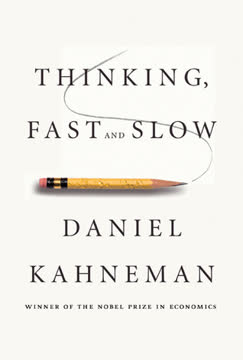
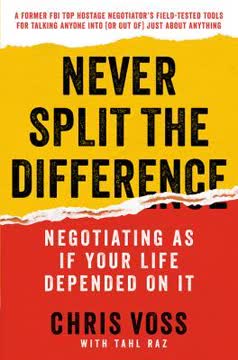


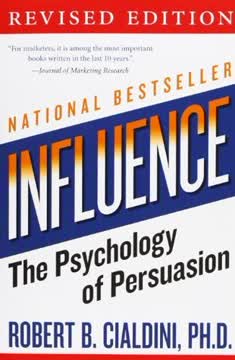


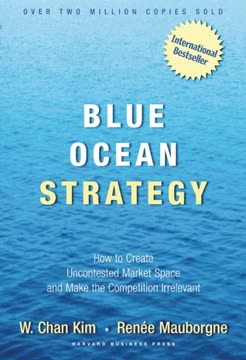
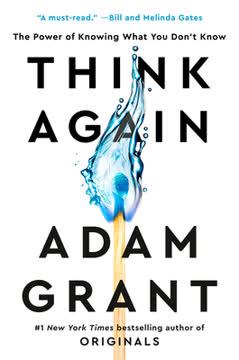
Download PDF
Download EPUB
.epub digital book format is ideal for reading ebooks on phones, tablets, and e-readers.







